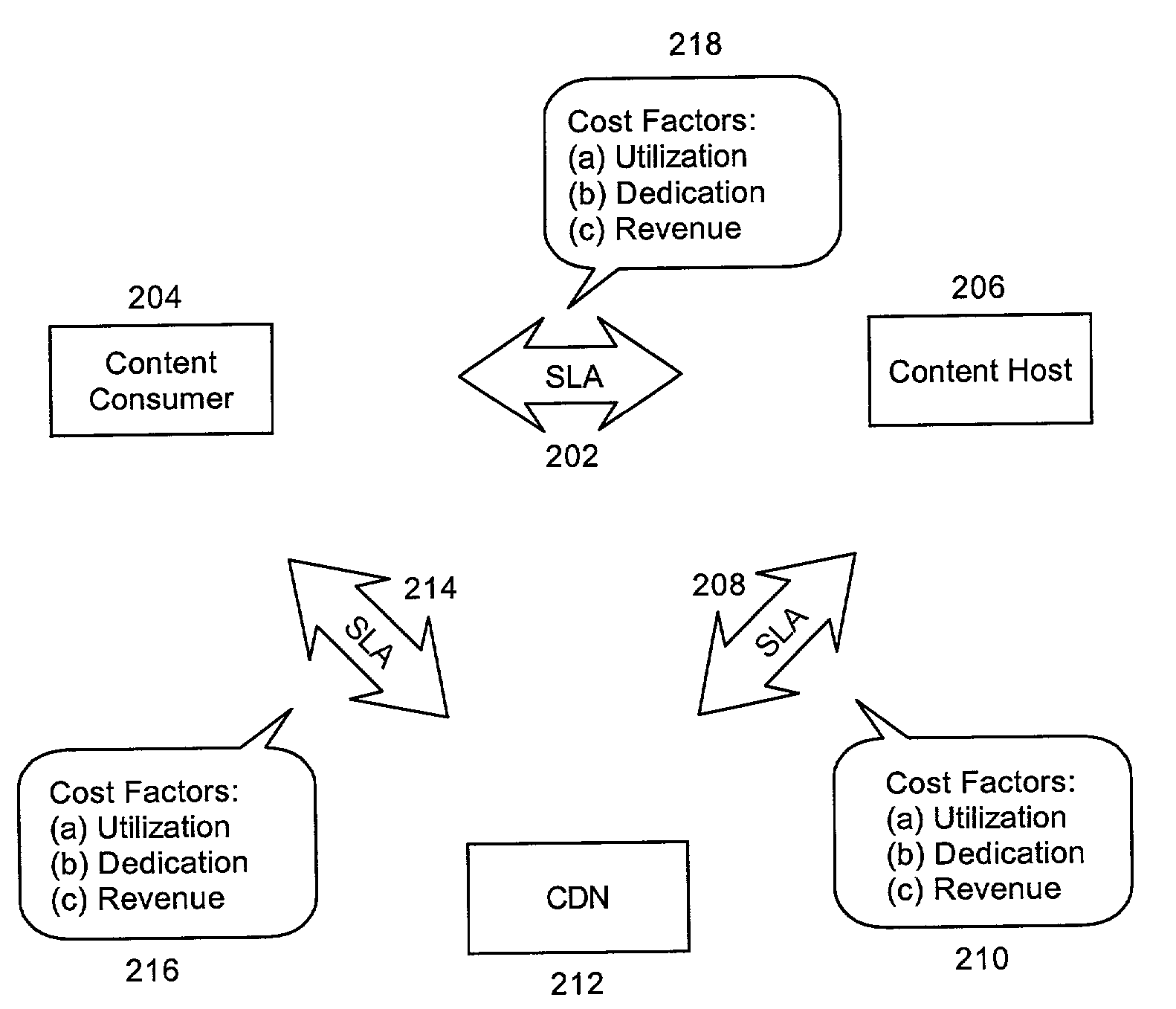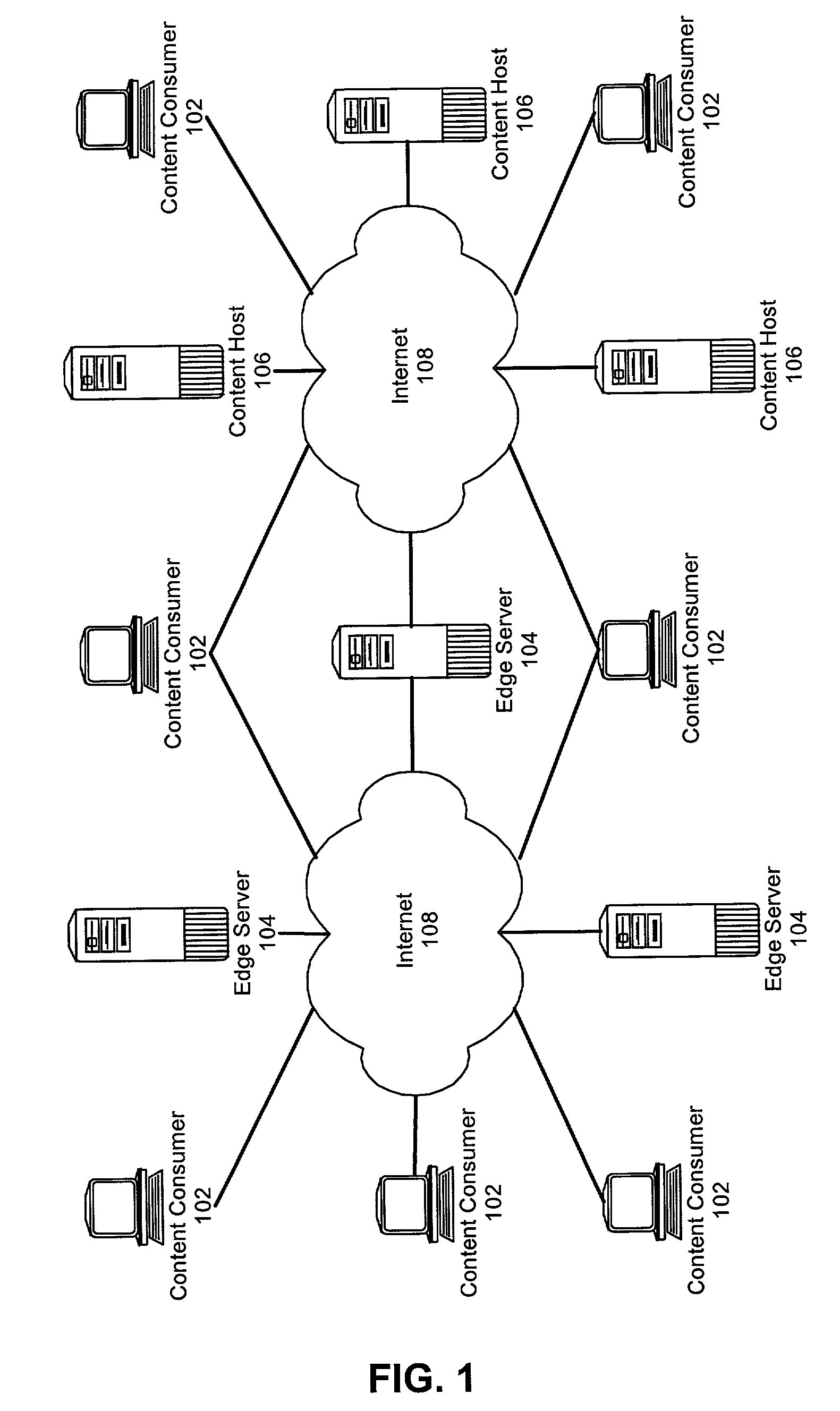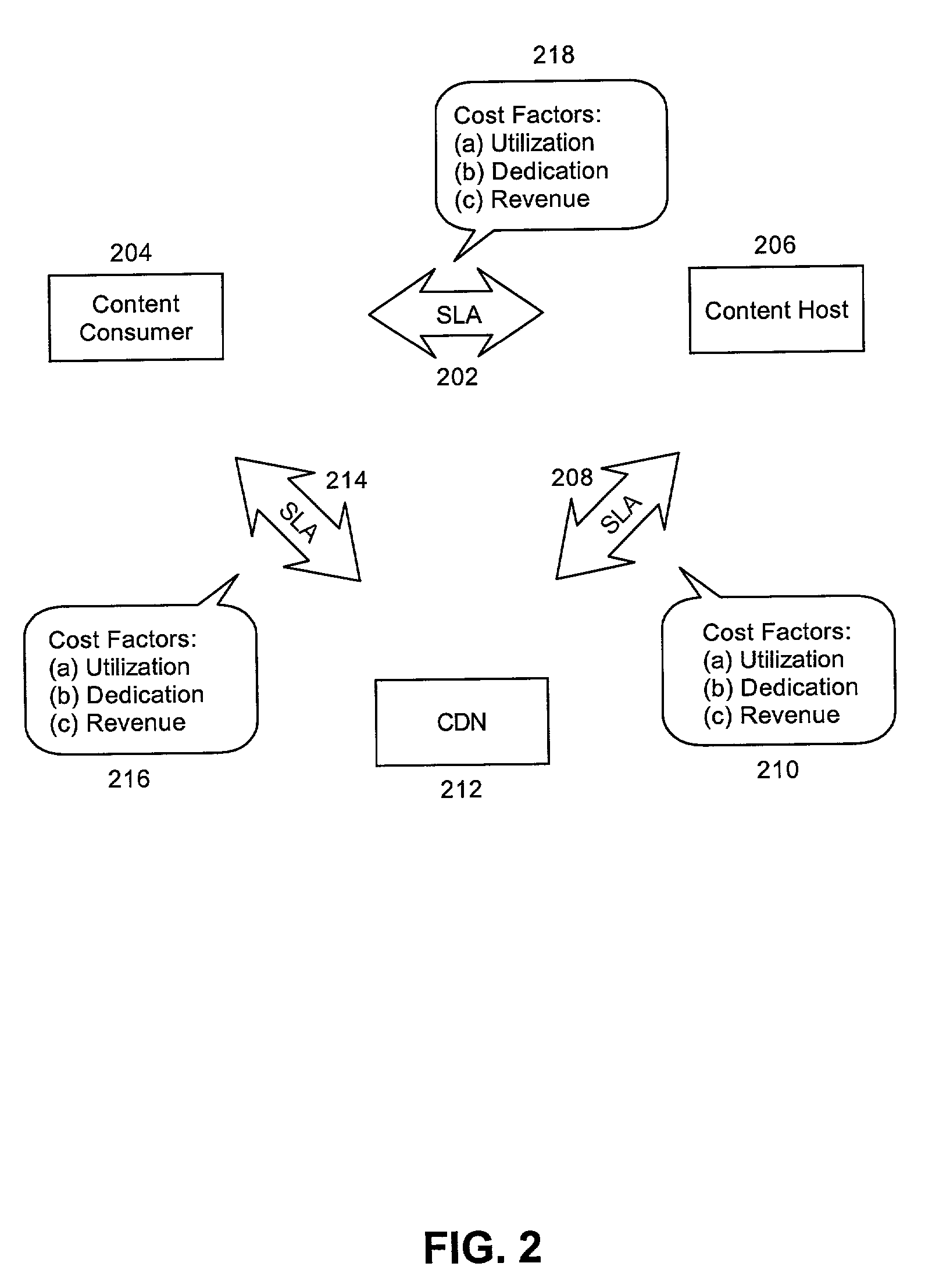Multi-tier service level agreement method and system
a service level agreement and multi-tier technology, applied in the field of network systems, can solve the problems of unnecessarily taxing the resources of the content host, the content hosting environment no longer exists in a vacuum, and the model of managing resource allocation choices wholly ignores the complete relationship between cdn
- Summary
- Abstract
- Description
- Claims
- Application Information
AI Technical Summary
Benefits of technology
Problems solved by technology
Method used
Image
Examples
Embodiment Construction
[0017]The present invention is a system and method for managing multiple tiers of an enterprise system incorporating a CDN, one or more content hosts and one or more content consumers according to the terms of individual SLAs between each tier component. In particular, in the present invention, SLAs can be established between individual ones of the CDN, content hosts and content consumers. In that context, each of the CDN, content hosts and content consumers can be viewed not only as a service provider, but also as a service customer.
[0018]Hence a “service provider chain” can be formed in which a CDN is a service provider to a content host which can be viewed as a service customer in its relationship with the CDN. Of course, that the CDN is a service provider to the content host does not require that the CDN serve content to the content host. Rather, as a service provider to the content host, the CDN serves content to content consumers in lieu of the content host serving the content...
PUM
 Login to View More
Login to View More Abstract
Description
Claims
Application Information
 Login to View More
Login to View More - R&D
- Intellectual Property
- Life Sciences
- Materials
- Tech Scout
- Unparalleled Data Quality
- Higher Quality Content
- 60% Fewer Hallucinations
Browse by: Latest US Patents, China's latest patents, Technical Efficacy Thesaurus, Application Domain, Technology Topic, Popular Technical Reports.
© 2025 PatSnap. All rights reserved.Legal|Privacy policy|Modern Slavery Act Transparency Statement|Sitemap|About US| Contact US: help@patsnap.com



